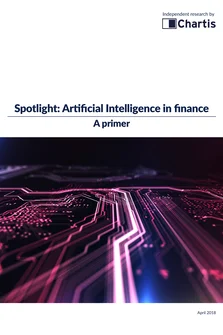Beyond Detection: Driving Automation and Artificial Intelligence into Financial Crime Risk Management
This report examines AI and automation within the context of an FIU. It explores how these technologies can help in AML and trade surveillance, and offers practical advice on overcoming organizational and regulatory obstacles to their deployment.
Introduction
This report examines AI and automation within the context of an FIU. It explores how these technologies can help in AML and trade surveillance, and offers practical advice on overcoming organizational and regulatory obstacles to their deployment.
The FIU’s foundation
As explored in the report preceding this one, Three essential steps to a better FIU (published in November 2018), a technology-driven Financial Investigation Unit (FIU) can prove highly beneficial in bolstering a Financial Institution’s (FI’s) investigative capabilities. A well designed and implemented FIU will help FIs tackle financial crime while at the same time reducing costs.
As outlined in our previous paper, to accomplish this an FIU requires three critical elements: strong leadership, a pragmatic data strategy and powerful case management functionality. This report will focus on Artificial Intelligence (AI) and automation – two key technologies that underlie an FIU’s systems, and help maximize its efficiency, by reallocating time-consuming and labor-intensive processes (such as Suspicious Activity Report [SAR] filing and negative news monitoring) away from the desks of Full-Time Employees (FTEs).
Cutting through the hype
The hype around automation and AI has risen to a fever pitch over the past few years. Meanwhile, FIs also find themselves facing a number of new challenges that have boosted the appeal of AI- based technologies. For example:
- Regulatory pressure. New regulations, and the massive volumes of data required for compliance, need new tools to address them.
- Ballooning staff numbers. To deliver compliance, FIs have also hired many new FTEs to aggregate and report on the risk data processed within their organizations. AI presents new opportunities to optimize workloads and manage costs.
- Data demands. The vast lakes of data generated by digitization and its ‘3Vs’ – volume, variety, velocity – present significant integrity and control challenges, which can be effectively addressed by AI.
Facing these difficulties, FIs’ system selection staff must ensure they have the knowledge to cut through the hype to find the right systems and supporting architectures to address their specific use cases. This report examines automation and AI, two integral tools for an FIU. Though each can boost efficiency on its own, bringing them together within processes can also generate greater benefits. Automation and AI have seen rapid uptake in payment fraud, but are now being deployed in other areas of financial crime. This report explores these use cases, looking at entity screening, transaction monitoring, and trade communications surveillance.
Only users who have a paid subscription or are part of a corporate subscription are able to print or copy content.
To access these options, along with all other subscription benefits, please contact info@risk.net or view our subscription options here: http://subscriptions.risk.net/subscribe
You are currently unable to print this content. Please contact info@chartis-research.com to find out more.
You are currently unable to copy this content. Please contact info@chartis-research.com to find out more.
Copyright Infopro Digital Limited. All rights reserved.
As outlined in our terms and conditions, https://www.infopro-digital.com/terms-and-conditions/subscriptions/ (point 2.4), printing is limited to a single copy.
If you would like to purchase additional rights please email info@chartis-research.com
Copyright Infopro Digital Limited. All rights reserved.
You may share this content using our article tools. As outlined in our terms and conditions, https://www.infopro-digital.com/terms-and-conditions/subscriptions/ (clause 2.4), an Authorised User may only make one copy of the materials for their own personal use. You must also comply with the restrictions in clause 2.5.
If you would like to purchase additional rights please email info@chartis-research.com






